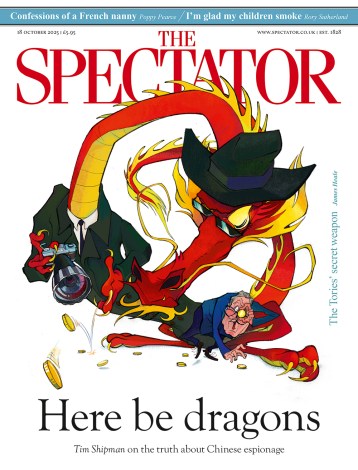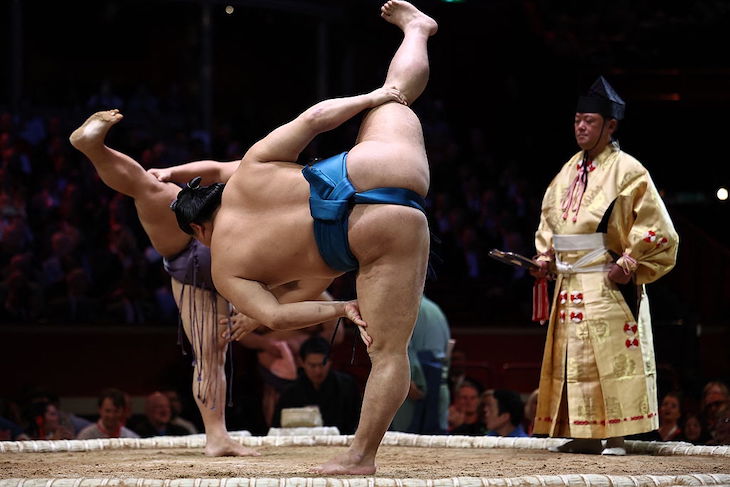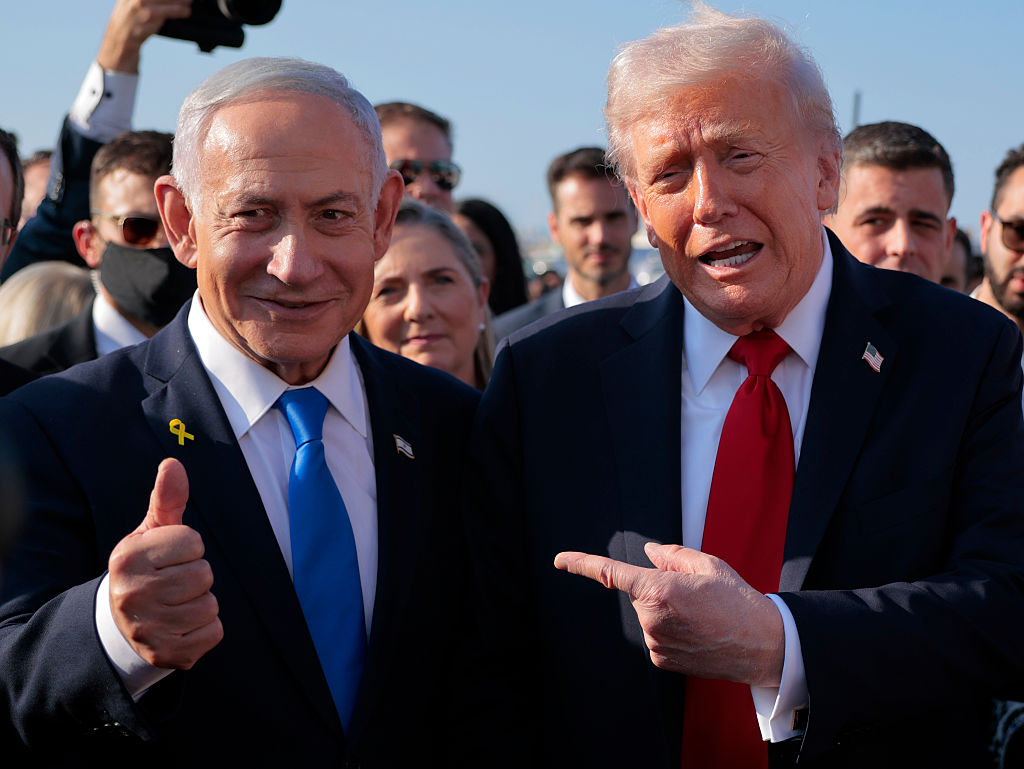Sumo is the featured attraction at the Royal Albert Hall this weekend in a rare foray for the ancient sport outside of its spiritual home of Japan. The five-day tournament started on Wednesday and features 40 rikishi (wrestlers) (about six-tonnes’ worth) squaring off in a specially constructed dohyo (ring). Reinforced chairs and upgraded toilets have been installed for the exclusive use of the 28-stone ‘naked ambassadors’ (as they are being called here in Japan).
Like test cricket, sumo wrestling is set apart and sustained by its antiquity
It has been a huge success so far. Tickets sold out long ago but can be picked up for hundreds of pounds on the secondary market. Ring-side spectators have been warned about the danger of being squashed by a falling wrestler.
Sheer curiosity will surely have accounted for much of this demand. Like test cricket perhaps, sumo is set apart and sustained by its antiquity (it has existed for around 1,500 years); and strangeness – the thought of a sport that requires athletes to increase their body weight to a dangerous level (many die young from heart complications) and where bouts rarely last more than 30 seconds is almost un-processable today. Sumo offers a fascinating glimpse into the past and a vanishingly rare monocultural experience in an increasingly globalised world (how interesting that it should prove such a draw in ‘diversity is our strength’ London).
This is not Britain’s first infatuation with what many consider Japan’s national sport. In the late 1980s, a golden era reminiscent of the ‘four kings’ days of middleweight boxing, Japan produced a group of charismatic wrestlers such as Chiyonofuji (‘the Wolf’), Konishiki (the ‘dump truck’) and the slimline fan’s favourite Terao (who always won the fighting spirit award). Channel 4 in its more experimental era took a punt and introduced it to the British public. It made for compelling viewing and led to a mini sumo boom.
It didn’t last. By the time I got to Tokyo in 1999, things were on the wane and my illusions were shattered early. I told a Japanese businessman how excited I was about attending a basho and he gave me a wry, knowing look and shook his head sadly. ‘You do know it’s all fixed?’ he said.
This turned out to be only the half of it. A series of scandals broke in the years that followed, rocking the sport to its foundation. Along with match fixing, there was bullying and abuse, gambling and links to the yakuza. Whistle blowers emerged and the dirty loin cloths were aired in public. The nadir was probably the death of a 17-year-old trainee in 2007 after a hazing ritual, though the expulsion of 23 wrestlers for match fixing in 2011 was another dismal low point. For a while, no amount of purifying salt scattered on the dohyo could banish the tainted odour of corruption and seediness.
To add to the perception of decline, Japan stopped producing winners. Mongolian wrestlers started to dominate, which didn’t go down well with the public who saw the sport as a uniquely Japanese disciple that could only be mastered by its native sons. The local boys had to be content with minor placings. It was all rather humiliating; imagine the French becoming champion Morris dancers. The public began to lose interest.
And then a renaissance was spearheaded by a saviour: Kisenosato Yutaka who was elevated to the top division in January 2017. He was the first home-grown Yokozuna (top ranked wrestler) in 19 years. Reforms in governance (a compliance committee was set up in 2017 to deal with abuse) gave the sport a much-needed credibility boost.
As a sign of its return to favour, prime minister Shinzo Abe invited Donald Trump to a basho on the latter’s visit in 2019. The odd couple leaders watched the action in very untraditional thrones as opposed to the customary cushions.
And the good news keeps coming. This year, we had another Japanese yokozuna Onosato. His promotion was confirmed in a meeting of the sumo elders that lasted six minutes. He is so popular that tickets for the six annual basho now sell out in under an hour.
Visiting wrestlers have been spotted – they are easy to spot – taking pictures outside London tourist attractions like Big Ben
The murkiness hasn’t been entirely dispelled, though. There was more unpleasantness in 2024 when a wrestler was banished for physically assaulting trainees. And there are still ugly rumours of the occasional ‘Kid, this ain’t your night, we’re going for the price on Wilson’ scenario after some rather eye-brow raisingly convenient results in crucial contests that rescued favoured wrestlers from economically disastrous relegation to the lower ranks.
The visiting sumo wrestlers seem unconcerned by all that, though. They have been spotted – they are easy to spot – taking pictures outside London tourist attractions like Big Ben and Horse Guards parade and in the process becoming tourist attractions themselves. Onosato and a fellow wrestler Hoshoryu partook of a hot dog from a street vendor and, confirming the exquisite politeness of the Japanese in all situations, declared it ‘delicious’.
They seemed relaxed and confident and glad to be on tour pushing the product. As well they might be. First stop a sold-out Albert Hall, then there is Paris next June to look forward to. And after that, all being well? Probably Riyadh.








Comments